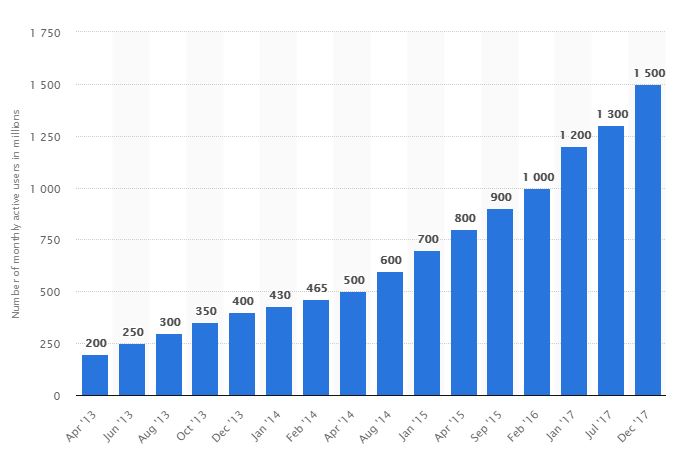In recent years, Christians around the world collaborating on ministry and mission have decided, in vast numbers, to skip conferences and face-to-face gatherings, and, instead meet virtually. This has been a boon for global interaction between East and West, North and South, at levels never before envisioned.
It is likely that the next time ministry leaders become part of a task group, they will be invited to join its virtual version and be expected to continue the conversational work online.
These virtual meetings are held on a web page link or in an app, and not at a place:
![]() Text chat: Text dialogue happens in a Facebook group, a WhatsApp group, any website equipped with a chatroom, or simply right in a mobile phone’s text messaging service. Group members catch up and contribute to a free-flowing, written conversation 24 hours a day. These are called asynchronous, or ‘not in real time’ tools.
Text chat: Text dialogue happens in a Facebook group, a WhatsApp group, any website equipped with a chatroom, or simply right in a mobile phone’s text messaging service. Group members catch up and contribute to a free-flowing, written conversation 24 hours a day. These are called asynchronous, or ‘not in real time’ tools.
![]() Audio: Live audio meetings use tools such as FreeConferenceCall[1] where a group calls into a specific audio ‘virtual room’ to conduct its conversation.
Audio: Live audio meetings use tools such as FreeConferenceCall[1] where a group calls into a specific audio ‘virtual room’ to conduct its conversation.
![]() Video: The emerging favorite form of virtual meetings are live video conference meetings (such as Skype, Zoom, WebEx, and many alternative services), where a group can see and read each other’s faces as they talk.
Video: The emerging favorite form of virtual meetings are live video conference meetings (such as Skype, Zoom, WebEx, and many alternative services), where a group can see and read each other’s faces as they talk.
How Christian leaders are using the online world
Virtual ministry teams are moving projects forward and making decisions together, expressly due to their routine use of virtual connections.
Examples
- One ministry partnership in a Middle Eastern security-sensitive country alternates its face-to-face meetings with online meetings every 90 days throughout the year, resulting in constant forward movement. When online, they have found that, while they cannot conduct as thorough or as deep a level of work as they can when they meet in person, they find it completely adequate for maintaining momentum.
- A South Asian ministry uses virtual meetings to check the quality of Bible translation. Formerly, its consultants met in one room with other translators and quality checkers. Now, with 84 Bible translation projects, it is not always practical for them to meet face-to-face.

An increasing number of in-person meetings are welcoming virtual participants as more than just observers.
Examples
- At a recent NextMove[2] diaspora gathering, 90 percent of the participants met face-to-face, and an additional 10 percent joined by video conference. They innovatively included both in-person and online participants in the total count.
- When a sub-team of the Global Alliance for Church Multiplication (GACX)[3] gathered face-to-face with its leadership, an additional half-dozen highly valued leaders joined by video conference. The group held two one-hour discussions on focused topics, ending up with a different result because of the perspectives of those attending virtually.
- When illness struck three members of a mission network leadership team, instead of canceling the meeting, these three joined the others virtually and were able to give reports on their work and join in conversations about the network’s progress despite their illness.
Christian ministries around the globe have seized on the advantages of virtual classrooms through online, interactive learning.
Examples
- Just as Fuller Theological Seminary now offers all its coursework for its degrees online,[4] Christian ministries around the world are offering a vast array of courses and institutes totally online.
- One research organization studied the online-learning and distance-learning activities of key ministries in the Middle East and North Africa and found many different online distance education platforms in use.
- Virtual classrooms are becoming increasingly popular in India. One large ministry is making all of its theological education available online and in-app form so that anyone and everyone can access the content with or without internet any time of day. Since continuous internet is still a challenge for the people of India, ministries are using apps that do not require a constant internet connection. A number of organizations in India are now holding online conferences and discussion forums using Skype, Zoom, or WhatsApp. Many churches are using virtual classrooms to train their leaders.[5].
Struggling churches among people groups where Christians are persecuted have been forerunners of those turning to virtual connections for fellowship, discipleship, and faith-building times together.
Examples
- An online Somali ‘virtual church’ is available every hour of the day on Sundays—in addition to hundreds of other churches that stream services in many languages.
- Life.Church distributes its ‘The Church Online Platform’ software[6] free to ‘remove the barrier of technology so any church can reach people for Christ through online ministry.’

A new crop of ministry tools is focused on bringing together Christian ministry leaders so that they can connect and communicate virtually even though they may be separated by great distances.
Examples
- Nate Scholz, the network facilitator for The Hub Community[7], leads a small team that builds a Google Map plugin to allow ministry partners to find and communicate with each other, and identify trends in movement among refugees and asylum seekers as they relocate around North America.
- The collaboration group visionSynergy[8] hosts its Synergy Commons[9], a global learning community for Christian leaders who want to build effective mission networks in their ministry fields. It now has over 1,100 Christian network leaders interacting in the online community.
Skype 4.9M daily active users
Zoom local connections in 90 countries and regions
WhatsApp 1.5M monthly active users
Comprehending the numbers
For those who have not kept up with digital communication’s quick rise, the numbers are astounding:[10]
- As of early 2018, Skype had about 4.9 million daily active users and more than 300 million monthly active users.[11]
- The Zoom video conferencing service has local call connections in over 90 countries and regions.[12] Overall, the video conferencing sector is growing approximately 20 percent larger every year.[13]
- WhatsApp, a mobile phone and desktop text/chat service that this author observes is being used more by Christians in the majority world than in the West, is one of the most popular mobile apps worldwide. The service announced in December 2017 that it has more than 1.5 billion monthly active users, up from over 1 billion just ten months prior.
Number of monthly active WhatsApp users worldwide from April 2013 to December 2017 (in millions):[14]

What is fueling this growth?
This new fact of frequent virtual meetings to facilitate global collaboration among Christians is the result of several drivers that explain, in part, what is happening to this communication space. Ministries operate in the volunteer space. Good connection with those volunteers is critical, whether they are board members, team leaders, network leaders, or participants. What are some top drivers?
 1. Connection with volunteers
1. Connection with volunteers
Allegiance Fundraising notes:
‘As the volunteer group grows and spreads out, it becomes more difficult to stay connected with each and every one. Video conferencing is a way for a nonprofit to easily connect its volunteers and management, and it offers many other benefits. . . . When managing a volunteer workforce, there is no substitution for one-on-one interaction. People donate their time and abilities to nonprofits because they are enthusiastic about the cause and believe they can make a difference. The more time higher-ups can give to these individuals, the more they can encourage and support this enthusiasm.’[15]
Younger people in ministry are fluent in communication tools, vastly prefer to use them, and are more likely to engage in ministries that harness these communication tools.
Additionally, volunteers these days have a stronger interior drive to be connected to ministries and have a greater expectation of access. They want a stronger sense of genuine connection to the groups to which they contribute time and energy—and this happens over video.
 2. Technological advances
2. Technological advances
In general, mobile phones and laptops have become globally distributed. The strategic market research firm Futuresource Consulting observes: ‘With an increase in usage of conferencing technologies and more people working from home, the demand for video communications and collaboration in the meeting room is at an all-time high.’[16]
Example
Dr. Alex Abraham, director of Operation Agape, India, reports, ‘It is true that in all walks of life [in India], virtual communication is on the rise. Facebook and WhatsApp are being used by millions of people in India. WhatsApp is certainly being used by church networks for communication within their own community as well as with the wider church networks. One example is the WhatsApp group on persecution relief in India. Within minutes, any persecution-related news in India is communicated widely not only in India but even globally. WhatsApp is probably the most popular virtual communication tool that is being used by the church in India. Among Christians, virtual communication is increasingly being used by the top leaders as well as middle-level leaders. At the grassroots level, virtual communication is still a challenge but certain simple tools such as Facebook and WhatsApp are very popular even at the grassroots level.’
 3. The benefits of video conferencing
3. The benefits of video conferencing
Allegiance Fundraising points out: ‘While video conferencing does not possess all of the advantages of being in the same room with a volunteer, it can prove more effective than other solutions. Both web and phone conferences do not promote the same kind of engagement as video conferencing.’[17]
 4. An economical solution
4. An economical solution
With tighter budgets, ministries and their leaders are looking for economy. Clearly there is a significant price differential between a virtual meeting and attending one that requires a flight and hotel, a cost that also includes time away from home. Virtual meetings reduce transport costs to zero.
New applications seem limitless
The pace of innovation by ministry entrepreneurs in virtual meetings is faster than we might ever imagine. Ministries and networks are still discovering new forms of connection between leaders:
- Online and mobile phone prayer groups.
- City-reaching coordination.[18]
- Mobile phone discipleship groups and training groups of all kinds.
- Virtual reality mission experiences.
The downsides of virtual meetings
Not all is rosy for online and virtual meetings. A ministry leader describes an all-too-frequent device connection problem in India. Attempting to begin a Zoom video conference on his computer, the connection failed. He switched to his iPad, which also failed. Finally, he got a successful Zoom connection on his mobile phone. The North American on that same call says, ‘In the end, sometimes you just have to spend the money for a phone call.’
To some it seems connection problems are a devilish intrusion. One leader says, ‘I believe Satan uses the weakness of the net to disrupt key conversations. I’ve lost count of the times that that’s happened over the years. A call can be really clear until it gets important.’
Making Peace with the Virtual
Even advocates for face-to-face meetings allow that virtual meetings have their place. Dr. Alex Abraham of India says, ‘Considering the practical difficulties, it may not be possible for all people to come together in one room. Therefore, we need to encourage virtual meetings and virtual training as much as possible. The role of virtual communication is to augment rather than replace face-to-face meetings.’
Endnotes
- https://www.freeconferencecall.com/.
- https://nextmove.net/.
- https://gacx.io/.
- Except for certain degree programs in the School of Psychology. See https://www.fuller.edu/academics/.
- Conversation with Dr. Alex Abraham, director of Operation Agape, 17 December 2018.
- http://churchonlineplatform.com/.
- https://thehubcommunity.wordpress.com/.
- https://www.visionsynergy.net/.
- https://synergycommons.net/.
- Editor’s Note: See article by David Yeghnazar entitled, ‘Can Technology Help Disciple Iran’s New Believers?: Evaluating the effectives of virtual discipleship’, in January 2019 issue of Lausanne Global Analysis https://lausanne.org/content/lga/2019-01/can-technology-help-disciple-irans-new-believers. See also article by Tim C entitled, ‘Facebooking the Unreached: Harnessing the power of social media for Christ’, in November 2018 issue of Lausanne Global Analysis https://lausanne.org/content/lga/2018-11/facebooking-the-unreached.
- See https://www.quora.com/How-many-people-use-Skype-every-day and
https://mspoweruser.com/skype-300-million-monthly-active-users/, accessed 17 October 2018. See also https://blogs.skype.com/stories/2013/04/03/thanks-for-making-skype-a-part-of-your-daily-lives-2-billion-minutes-a-day/. - See https://zoom.us/zoomconference.
- See https://www.videoconferencingdaily.com/trending/video-conferencing-market-growth-remains-strong-bloody-consolidation-coming/.
- Used by Permission: https://www.statista.com/statistics/260819/number-of-monthly-active-whatsapp-users/.
- https://www.allegiancefundraising.com/the-advantages-of-video-conferencing-for-nonprofits/.
- https://www.commercialintegrator.com/communications/collaboration/video-collaboration-market-video-conferencing.
- https://www.allegiancefundraising.com/the-advantages-of-video-conferencing-for-nonprofits/.
- The city-reaching movement has brought about collaboration among diverse ministries and denominations in typically large metroplexes, particularly in North America, allowing the gospel to impact entire cities. Untold levels of virtual meetings facilitate these amazing initiatives. See www.cityreaching.org.
